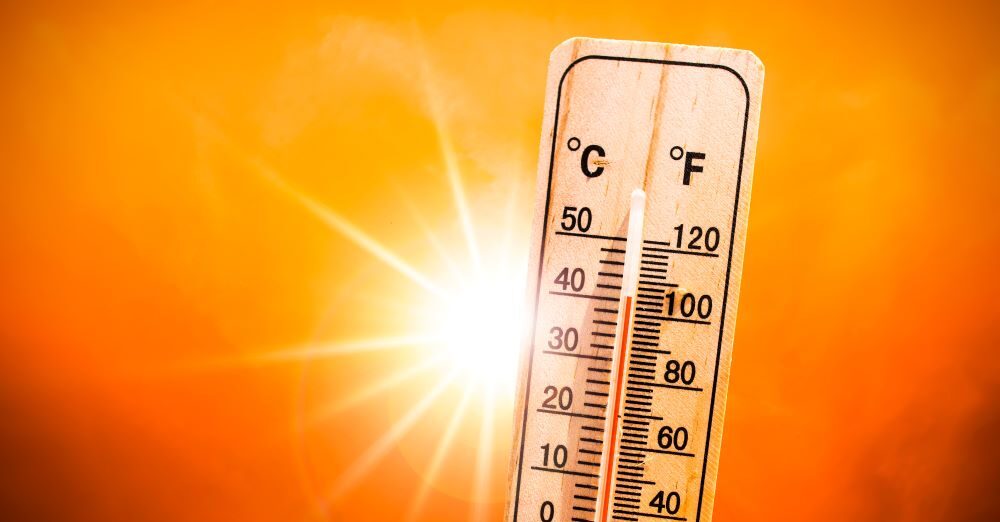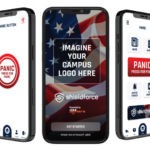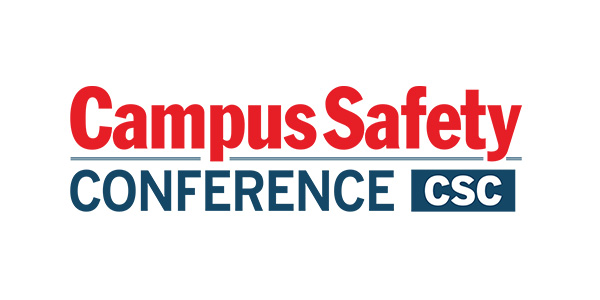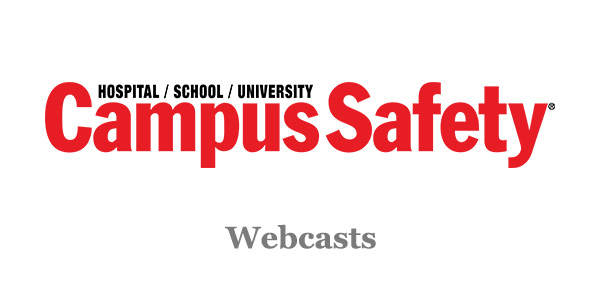Extreme heat is a dangerous risk for everyone. Central air conditioning may be a staple for the Southeast and Southwest, but many communities farther north lack such luxuries and are not accustomed or well equipped for high heat and humidity. So, when the heat comes calling, especially if it’s a sticky, muggy, humid heat, even open windows and box fans won’t do the trick. Many heat-related fatalities occur in northern cities like Chicago, Detroit, Minneapolis and Milwaukee. Unfortunately, the elderly tend to be the most susceptible in these areas.
Related Article: Back to School: 10 Ways to Keep Student-Athletes Safe in Record-Breaking Heat
Before we dismiss heat as a threat that only affects the elderly, we must recognize that many more fatalities occur to those working or playing outdoors. According to the CDC, from 2004-2018, an average of 702 heat-related deaths (415 with heat as the underlying cause and 287 as a contributing cause) occurred in the United States annually. The Occupational Safety and Health Administration (OSHA), further acknowledges that workers who have not built up a tolerance to heat conditions, including new workers, temporary workers or those returning from more than a week or more off are at greater risk. For those who live in parts of the country that are not accustomed to the extreme heat, the risk is higher because of lack of tolerance.
The Limitations of Heat Index in Gauging Heat Risks
The common go-to number we all reference to assess our risk for heat issues is heat index. Heat index is the measure that accounts for temperature and humidity combined. Many weather providers will refer to this as the “feels like” temperature. For example, a high temperature of 94 degrees combined with 75 percent relative humidity will have a heat index of 103. This is often translated into saying that “it will feel like 103 degrees outside.” The National Weather Service places that number in the “danger” zone for heat disorders.
Unfortunately, what most people don’t know is that heat index paints a deceptive picture. The fact is that it measures what it will feel like for someone sitting still in the shade. It is not a true reflection of what the heat is doing to the body for those out in full sun, actively engaged in exercise or work. For those who are fully exposed to the sun’s wrath, the danger is magnified significantly.
Heat index is just a surface factor of a potentially dangerous situation on your hands. Consider that athletes, outdoor employees, fitness enthusiasts, summer campers and others don’t always have the luxury of shade. They most certainly are not sitting still either. The U.S. military was one of the first organizations to realize that they needed to do more to keep personnel safe while actively engaged in their training and duties.
Wet Bulb Globe Temperature (WBGT): The Key to Understanding Heat Stress
The term “Wet Bulb Globe Temperature” is certainly a mouthful. WBGT for short, it is quickly becoming the most widely used index of heat stress. WBGT was invented and first used during the 1950s as one element in a successful campaign to control serious outbreaks of heat illness in U.S. Army and Marine Corps training camps. It is a measurement of apparent temperature used to estimate the effect of temperature, humidity, wind speed, and visible and infrared radiation from sunlight on the exposed human body. In other words, what it feels like on the human body actively engaged in work in direct sunlight.
WBGT is not an entirely new concept on campus. The American College of Sports Medicine has been publishing guidelines for the use of WBGT in athletics for a long time. Many industrial hygienists in outdoor professions also use the measure for the protection of employees, yet so many Americans have never heard of WBGT. What’s that all about? The answer is that until recently, the calculation of WBGT required highly localized measurements using hand-held sensors.
Related Article: Severe Weather: More Than Just a Seasonal Threat
Given the challenging need to conduct localized measurements in real-time, the use of WBGT previously had been limited to the most disciplined of entities like the military and dedicated sports trainers. Without the convenience of automated readings, the measurement of WBGT has to be a concerted and conscious effort. Without the right equipment, there’s not much one can do to calculate WBGT.
There are several limitations to WBGT. First, it is a highly localized measurement of numerous variables. A reading where you stand now can be entirely different a few hundred yards away because of different wind flow around buildings and so forth. Furthermore, things are constantly changing – full blazing sun this minute may give way to a passing cloud the next. This can change the readings quite a bit. Therefore, it’s important to interpret WBGT as an approximation rather than a precise science. In other words, don’t split hairs between one number and the next. If it’s dangerously hot, take action.
How to Interpret WBGT and Protect Against Heat Illness
If I tell you the Wet Bulb Globe Temperature right now is 88.5 degrees Fahrenheit, you’d probably just stare back at me. It is critical to put WBGT into context of what it’s doing to the body. Otherwise, it’s just a worthless number. The higher the value, the less time it takes for heat-related illness to set in. To help visualize this concept, the military and other organizations developed a corresponding colored flag system to indicate the level of danger associated with heat stress.
Green flag conditions, while toasty, allow up to 45 minutes of working or exercising in direct sunlight before requiring a 15-minute break in cooler conditions to recover. Once you get to red and black flag conditions, that ratio becomes very lopsided. In these extreme heat conditions, you need a 40- to 45-minute break for every 15-20 minutes of exposure. How’s the coach or foreman going to respond to that prospect? Not a very efficient use of time. Yet, in light of numerous recent cases of athlete and employee fatalities, school officials and employers are forced to make changes.
Next Gen Heat Stress Management
Measuring Wet Bulb Globe Temperature (WBGT) is like chasing a moving target. On-site hand-held measurements at the time of threat may ensure safety, but it does little for the effective management of one’s time. Wouldn’t it be nice if we could get automated WBGT readings? Wouldn’t it be convenient if we could get alerted to dangerous heat stress conditions by email, SMS text, phone call or push notification to our mobile devices? Better yet, wouldn’t it be ideal if the daily forecast included a predicted WBGT value?
For many K-12 schools, colleges and universities throughout Florida and elsewhere in the United States, those capabilities exist today. A company based in Tallahassee, Fla., WeatherSTEM, has introduced the first commercially available weather monitoring system capable of real-time WBGT measurements, automated notifications and WBGT forecast. WeatherSTEM has been installed at 11 of 15 Atlantic Coast Conference (ACC) institutions and discussions are underway with some of of the others.
At Florida State University, athletic trainers who were once charged with the tedious task of measuring WBGT “during the heat of battle” (pun intended) are now able to determine heat stress right at their fingertips through websites, mobile apps, and even social media. This has proved to be a total game-changer for FSU trainers who can now check the forecast for the day and make practice adjustments accordingly, hours in advance.
With all 67 counties of Florida, mostly at K-12 schools, tapping into the ability to predict and monitor extreme heat stress conditions, emergency management teams, health officials, and public servants alike are recognizing that accurate and accessible WBGT measurements are a great benefit to public safety and are no longer limited to the military and big-name athletic programs.
Now, before the football team thinks it catches a break from full-pad practice during pre-season camp, consider the alternatives. Do you think the U.S. Marine Corps cadets at Parris Island catch a break from their training because of the stifling heat of a South Carolina summer? No way! They just have to wake up earlier or stay up later to conduct training during the cooler times of the day. For most marquis college football teams, that means construction of indoor practice facilities.
What Are the Symptoms of Heat Exhaustion and Heat Stoke?
The health effects related to heat can range from inconvenient to deadly. The most concerning part about heat-related illnesses is that they sneak up victims so slowly and silently that the person doesn’t realize he or she is getting ill until it’s too late. Heat illness is a progressive problem, meaning lesser symptoms left unchecked can quickly grow into bigger problems.
The foremost sign of heat illness is commonly referred to as heat exhaustion. Its symptoms can include fatigue, nausea, headache, muscle aches and cramps, weakness, confusion or anxiety, drenching sweats accompanied by cold/clammy skin, slowed or weakened heartbeat, dizziness, fainting, and agitation. While some symptoms are more obvious than others, one can easily mistake more than half of these signs for hard work or exercise. When victims and observers fail to realize that these early signs are indications of larger problems to follow, things can get dangerous.
When symptoms of heat exhaustion go unmitigated, the downward spiral can be a fast one. The next progression is heat stroke. Symptoms of heat stroke include vomiting; vertigo; hot, flush and dry skin; rapid heart rate; decreased sweating; shortness of breath; decreased urination; blood in urine or stool; increased body temperature; loss of consciousness; or convulsions. Heat stroke may occur suddenly without any symptoms of heat exhaustion. Immediate medical care is required and any delay can be deadly.
Essential Steps to Prevent Heat-Related Illnesses This Summer
The most tragic aspect to heat-related illnesses and death is the fact that they are completely preventable. Dr. Marshall Shepherd, director of the Atmospheric Sciences Program and the Georgia Athletic Association Distinguished Professor for the University of Georgia, says that proper hydration alone is not the only consideration for staying safe in extreme heat situations.
With adequate planning, outdoor activities can be rescheduled to safer times of the day such as early morning or evening. If work or exercise must be conducted during the hottest time of day, make sure participants are adequately prepared. In a recent article on Forbes.com, Dr. Shepherd said he would “advocate that practices be postponed or moved indoors if a sustained period of days above certain heat index or wet-bulb globe temperatures are expected.”
Related Article: CPR and AED Training in Schools and Colleges Saves Lives
Everyone working outside in the sun or even in the shade must be hydrated with fluids devoid of sugar, caffeine or alcohol. To be adequately hydrated means drinking far more than you think you need in advance of commencing activities. Once you feel thirsty, you’re already behind the curve and are in danger. This is why you see many construction workers and athletes drinking directly from one-gallon jugs. Chilled or iced beverages are even better. Hydration is the key to prevention.
There must be opportunities for people to seek shade. Shade relieves at least a portion of the assault on one’s body by removing the sun’s light and UV rays. The angle of the sun makes a difference as well, which is why the peak of summer is more dangerous than spring or fall. While shade provides some respite, the ambient air temperature and humidity (heat index) may not allow for adequate cooling relief to occur to return to a safe core body temperature. For this reason, access to a cooler, air conditioned space – even within a vehicle – is essential to reset the body to a safe condition before resuming activities.
Extreme heat illnesses are 100 percent preventable. Fortunately, there is now greater access to WBGT measurements. Combining WBGT with the prevention steps I’ve just outlined will ensure a better informed and safer public. That’s a pretty cool thing.
Dave Bujak is a senior planner for the IEM and instructor for the National Diaster Preparedness Training Center. Previously he served as Florida State University’s director of emergency management. This article was originally published in August 2016 and has as been updated.
NOTE: The views expressed by guest bloggers and contributors are those of the authors and do not necessarily represent the views of, and should not be attributed to, Campus Safety.













